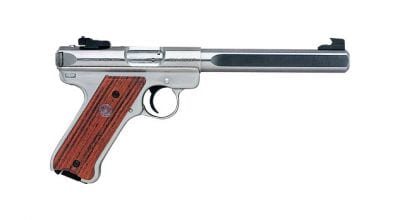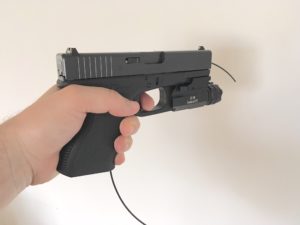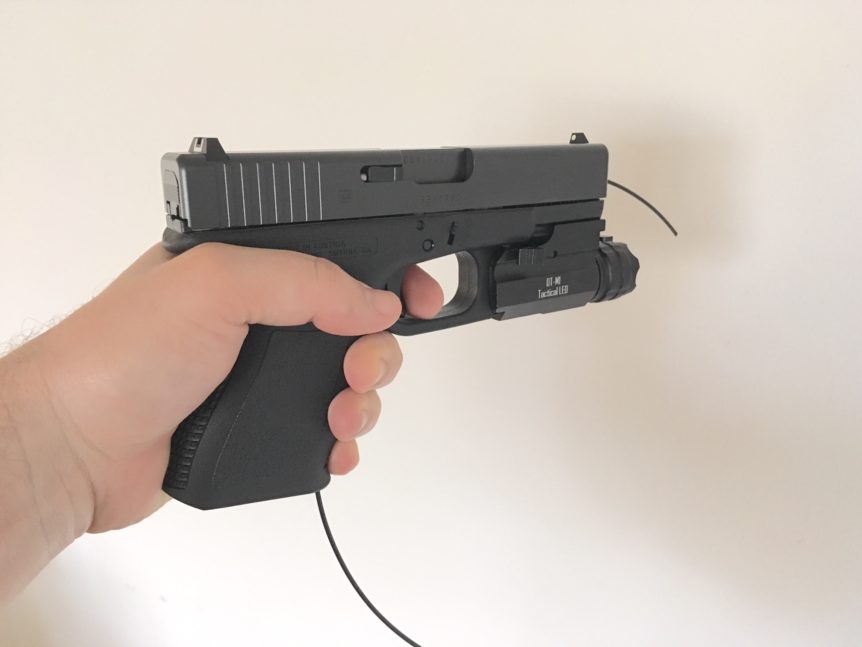I remember from a young age always being told to never dry fire a gun, so when I purchased my Glock 19 I was surprised to hear so many people recommending dry fire drills to improve shooting accuracy.
Like many things in life there is always conflicting information floating around so I decided to research if it was okay to dry fire my Glock 19 handgun as well as all the other firearms in my collection.
What is Dry Firing?
Dry firing is the simple act of “firing” the gun without a live round in the chamber. For the Glock/SIG/M&P and other semiautomatic handgun this means you rack the slide without any lives rounds, point the gun in a safe direction (as you always should) and pull the trigger. The hammer drops against the firing pin and you hear the click but nothing happens.
This does not sound too problematic right? So why has this simple act caused so much heated discussion and debate over the years?
Arguments For and Against Dry Firing
There are two main camps when it comes to dry firing your gun: those who say it’s harmful to your gun without accurately simulating live firing and the other camp who argues the complete opposite. The truth is often somewhere in the middle depending on the circumstances.
All guns have the specific design to be fired with a round in the chamber, so the concern is that dry firing a gun over and over will break the striker or firing pin. In some cases this can occur, but for most modern centerfire firearms this is very unlikely and the practice is considered safe. There is one notable exception when it comes to modern firearms: rimfire pistols and rifles.

Rimfire firearms should never be dry fired without the use of a spent case or dummy round because of the way they are designed. When a rimfire pistol or rifle is dry fired, the striker hits the outside mouth of the barrel chamber instead of the soft brass rim of the cartridge that is normally there. This can not only damage or destroy your firing pin, but over time will peen the barrel face. If this is repeated numerous times you can damage this area so badly ammunition will no longer load into the chamber.
To address the argument that dry firing practice does not accurately simulate live firing, I would say to some degree this is true since there is no recoil and new shooters mentally react differently. But that is sort of the point, many shooters will flinch in anticipation of a shot, but with lots of practice shooting live rounds and dry fire drills you can reduce this bad habit substantially.
Some of the best competition shooters I know swear by routine dry fire drills as often as possible. Part of the trick is practicing both dry firing and live firing while keeping each practice as close to the other as possible. This means your aim, stance, grip and trigger pull should be identical for dry firing and live firing drills.
What Do Gun Manufactures Say About Dry Firing Their Guns?
Here is the response regarding dry firing directly from the manufactures in case you are doubting :
Glock: “It is ok to dry fire your Glock pistol, but in situations where the pistol will be subjected to continuous sessions of dry firing, the use of a snap cap or dummy round is recommended.”
SIG: “It is safe to dry-fire our center fire pistols. You would want to use a snap cap or plug if extensive dry-firing is done. Always count your dry-firing in your live fire count to be sure all springs and pins are in top condition. DO NOT intentionally dry-fire any rim fire pistol such as the Mosquito, .22LR conversions or Classic Pistols.”
M&P: “Yes, except for the .22 caliber pistols which includes models 22A, 22S, 422, 2206, 2214, 2213 and 41. .22 caliber revolvers such as models 17, 43, 63, 317 and 617 also should not be dry fired.”
Dry Fire Drills to Improve Your Shooting

Before conducting any dry fire drills, be sure to check and triple check that your firearm is unloaded. You should also never have any ammunition in the room while dry firing and it is good practice to “rope” your gun if you are not using snap caps. “Roping” just means you put some string or similar (I use weed wacker line) through your barrel and out the magazine well which removes any doubt that a live round is accidentally loaded into the chamber.
Training System

The Wall Drill
The Balance Drill
The Balance Drill can be done simultaneously with the Wall Drill by balancing a coin or spent casing on the front sight. This provides an added incentive to control the muzzle of your pistol and gives immediate feedback on how well you are doing.
The down side to the Balance Drill is that some front sights are not shaped well to hold a coin or spent casing. The stock front Glock sight is an example of this, so you may want to pass on the balance drill if you are using these.
How Much and How often Should I Dry Fire Drill?
To provide noticeable improvements on your shooting you should drill for 10-15 minutes a day, three days a week. Any more than that can get boring and your technique may suffer during your practice. Try twenty reps with your normal grip using both hands, then five reps using only your strong hand and finally five reps only using your weak hand. Try this for a few weeks before a trip to the range and you will most likely see an improvement on your accuracy.
Snap Caps
While it is true that you can safely dry fire almost any modern firearm it is recommended that you purchase some snap caps if you plan to dry fire regularly. Firearms are designed to have a firing pin hit a primer, and when you dry fire a gun something inside the firing group eventually stops the pin if it does not hit a primer first. Snap Caps will protect your firearm from unnecessary damage by absorbing some of the force from the firing pin being struck.
They are inexpensive and you wont have to worry that even after thousands of trigger pulls you will not be causing any damage to your firearm. Below is a short list of common pistol calibers for those looking:
Caligunner Copyright © 2018.
All Rights Reserved. Caligunner.com is a participant in the Amazon Services LLC Associates Program, an affiliate advertising program designed to provide a means for sites to earn advertising fees by advertising and linking to amazon.com.

